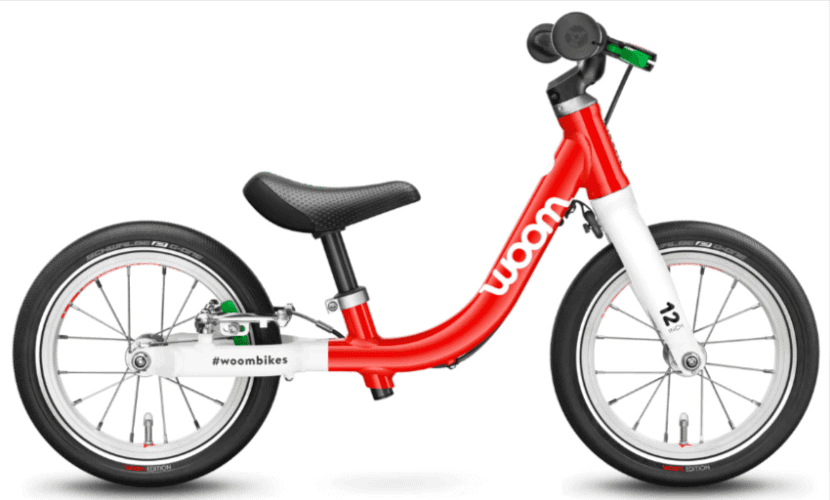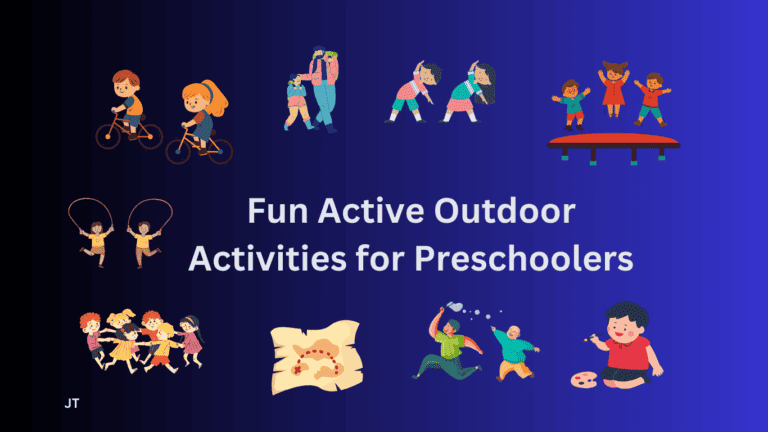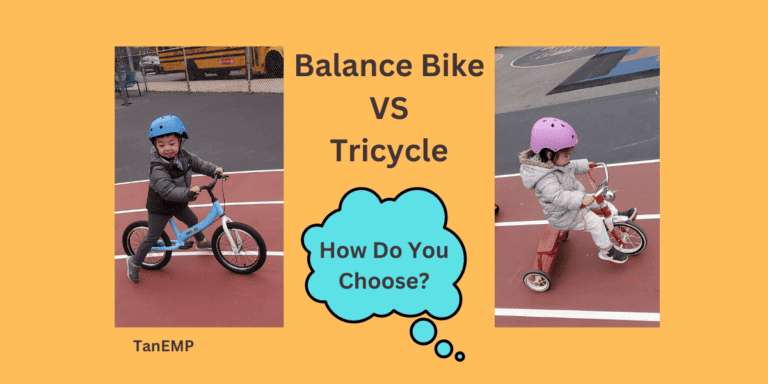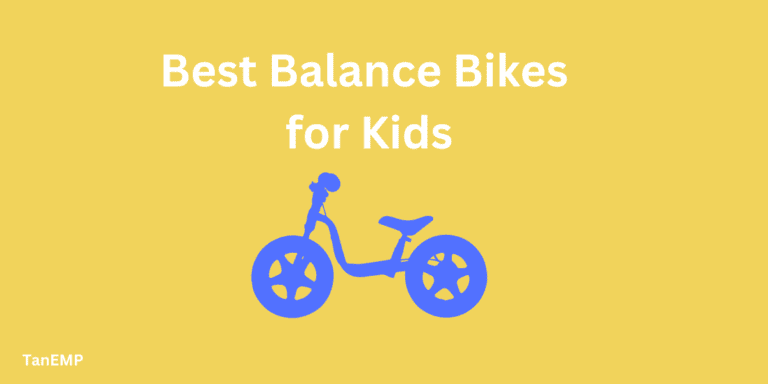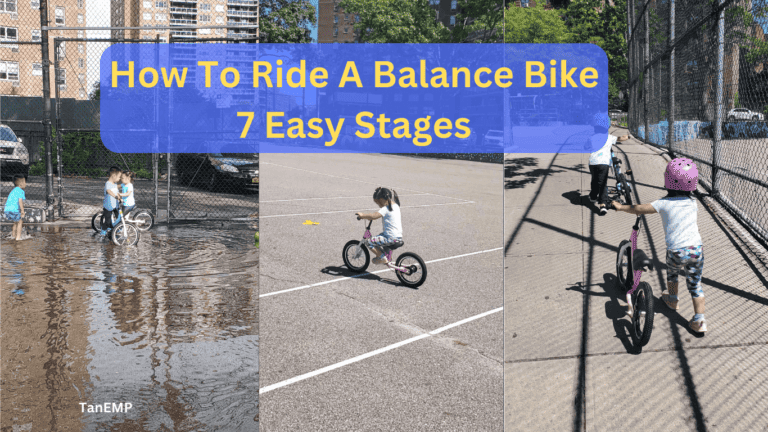Balance Bike Vs Training Wheels – Which One Is Better?
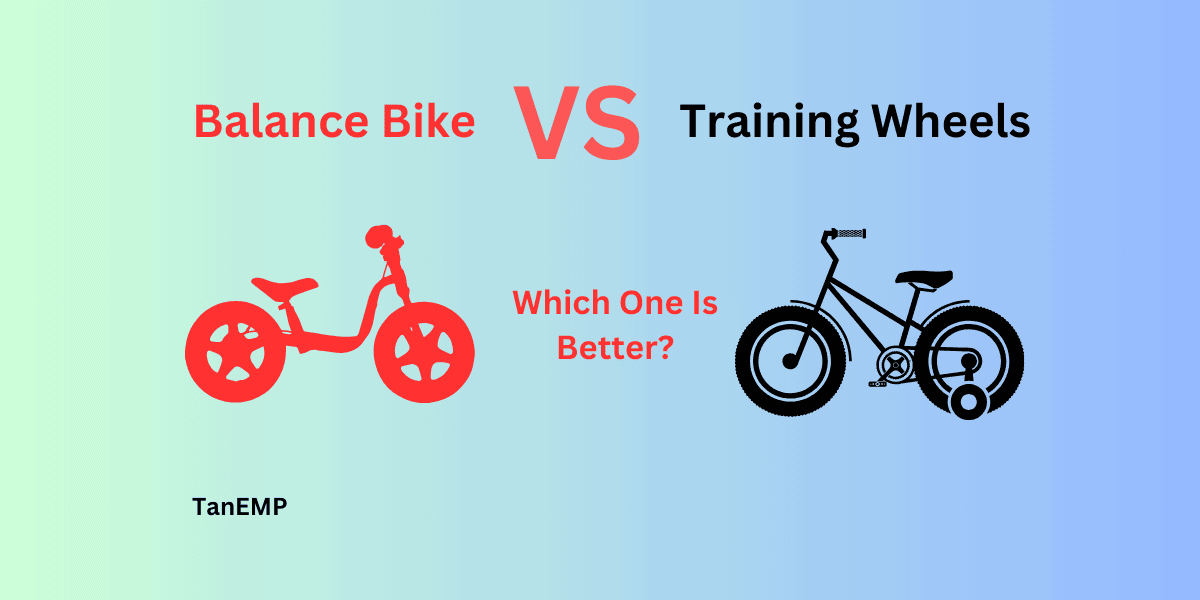
Is training wheels the best method for your kids to learn how to ride a bike?
Like many parents here, my first bike experience was with training wheels (a.k.a stabilizer wheels). I remember the first week of riding with training wheels, I chased my dog and friends in the neighborhood.
It felt great, secure, and confident that riding a bike is so easy.
After taking off my bike’s training wheels, I quickly realized that I wasn’t quite ready to ride on my own. So I ask my dad to put them back on the same day.
Do you have a similar experience with training wheels?
The good thing is that training wheels starting to phase out and balance bikes become popular alternatives to training wheels.
Balance bikes offer numerous advantages over training wheels
Below are some basic key differences between the two.
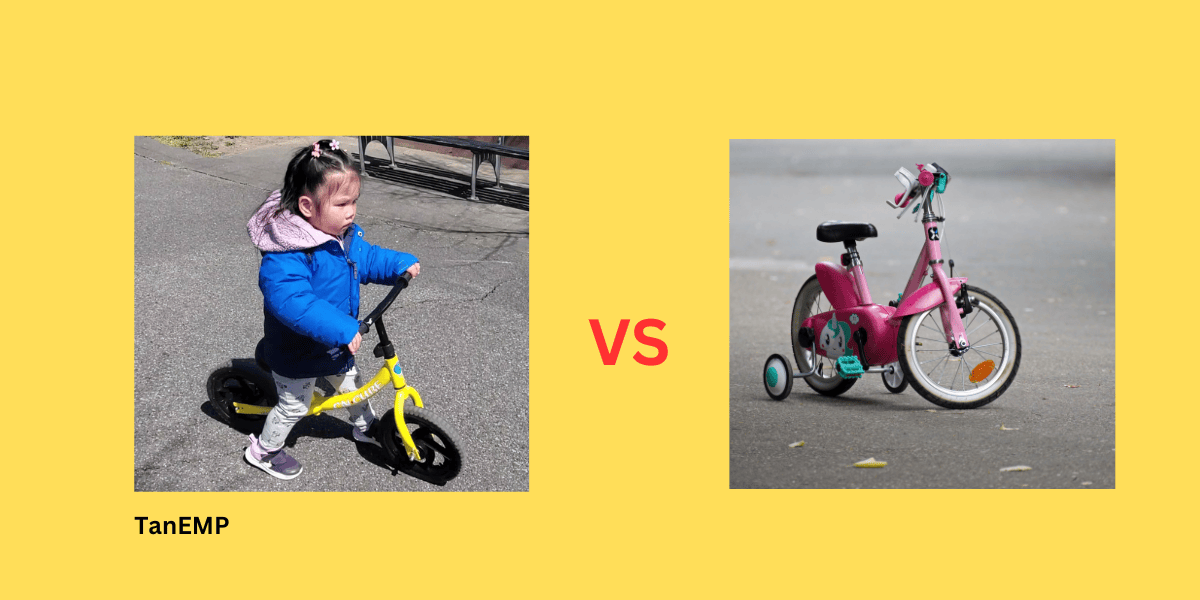
Key Difference of Balance Bike Vs Training Wheels
- Balance bikes teach balance and coordination from an earlier age.
- Training wheels don’t teach balancing skills for riding.
- Balance bike skills translate directly to pedal bikes later.
- Balance bikes build confidence and independence in riding.
This post will compare balance bikes versus training wheels for beginning riders.
You’ll learn the pros and cons of each method and the skills learned that transfer to pedal bikes later on.
By the end, you’ll know which is the better choice to help your child learn to balance and master two-wheel riding.
What is a Balance Bike?
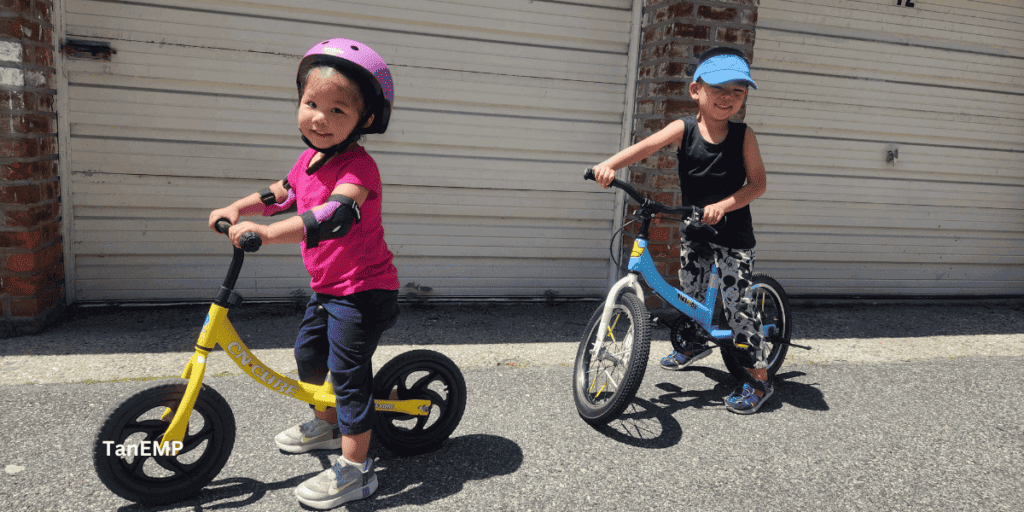
A balance bike is a pedal-less bike that kids use their feet to push or run along.
It is the most basic way to teach 18 months to 5 years the core skills of learning balance, coordination, and control needed to ride a real bike.
The balance bike was designed as an alternative to training wheels so young kids have a better transition to pedal bike riding.
Discovering the existence of balance bikes was a game-changer for me as a parent.
I initially considered training wheels for my son until I learned about the unique advantages balance bikes offer.
Equipping my 3 1/2-year-old with his first balance bike proved to be a decision without regrets.
Not only did he ride more proficiently than his friends, effortlessly navigating uneven surfaces, but he also added a few tricks like gliding during his ride.
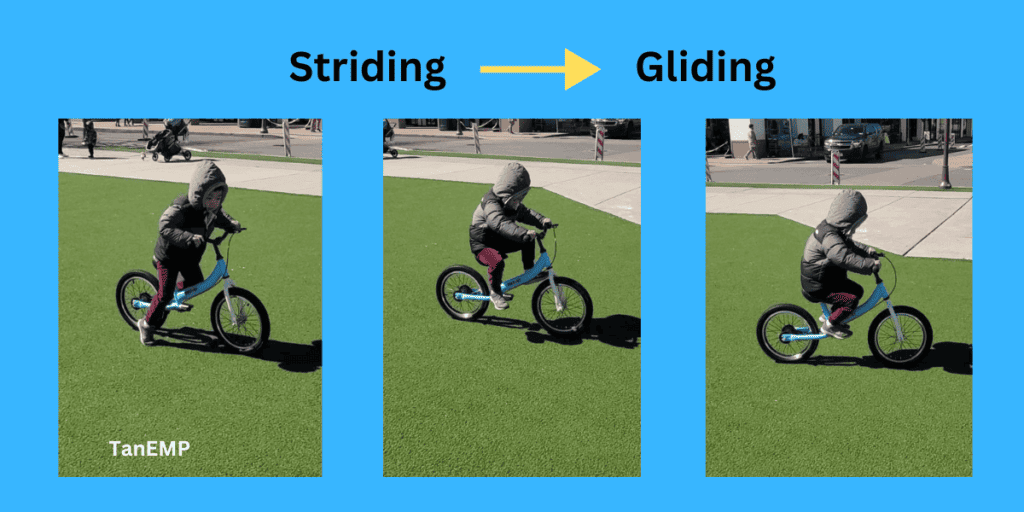
And his friends are struggling to stay on the bike and maintain balance.
The Evolution and Spread of Balance Bikes:
The history of balance bikes dates back to 1817, but it wasn’t until 1997 that they became commercially available, thanks to a German designer.
Rapidly gaining popularity among European parents in the 2000s, balance bikes became a global phenomenon in the 2010s, revolutionizing the way children learn to ride bicycles.
What is a Pedal Bike with Training Wheels?
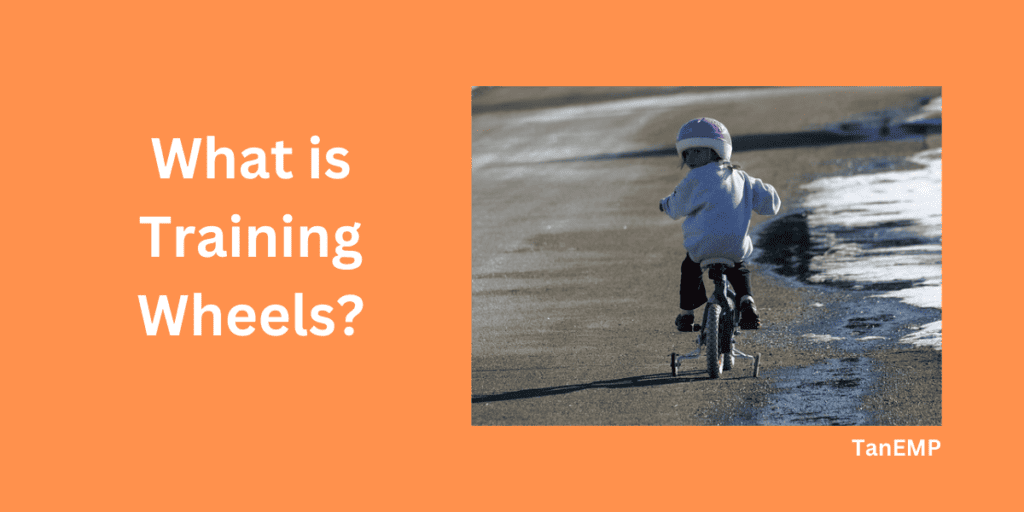
Ever wondered why pedal bikes with training wheels might not be the best choice for your child’s first cycling experience?
While many parents are familiar with training wheels from their childhoods, it’s essential to understand their limitations.
I truly didn’t learn to ride a bike with my training wheels. I learned to ride with bruises and cuts from multiple falls.
A bike with two training wheels attached to the rear wheel is designed to help kids learn balance and build confidence by preventing the bike from tipping over.
Think of training wheels as if you’re holding onto your child’s shoulder to keep them balanced while they learn to pedal.
However, what happens when you take your hand off?
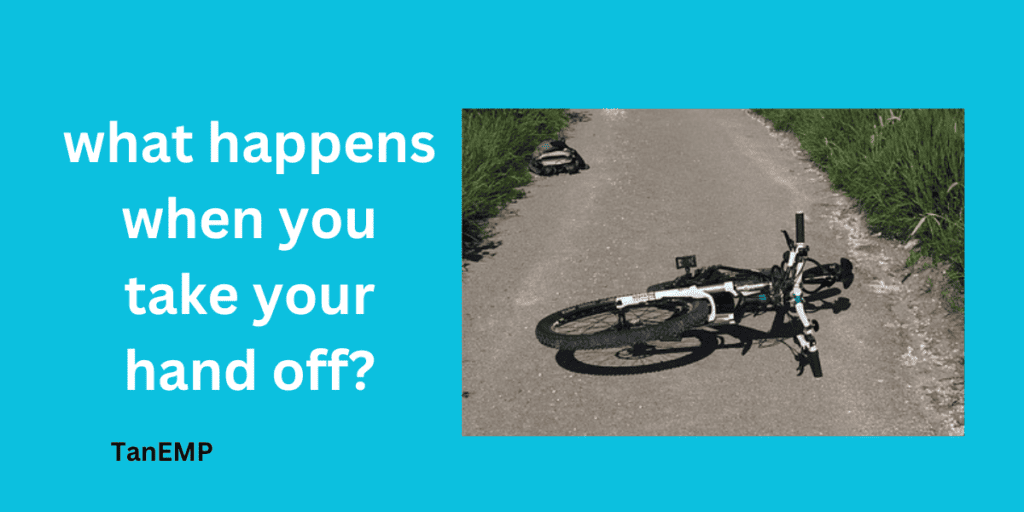
Most likely, they lose balance and topple over.
This occurs because the safety net provided by the training wheels (or your hand) prevents your child from truly learning how to balance on two wheels.
Your child won’t have this problem if they use a balance bike instead of training wheels.
Why Training Wheels Is Not Good For Your Kids?
Transitioning from personal experiences, let’s delve into why training wheels have significant drawbacks:
- They don’t teach your kids how to balance on two wheels.
- They provide false confidence in riding a balanced bike, increasing your kids’ frustration.
- They are not as mobile and agile as balance bikes, limiting your child’s ability to maneuver and explore their newfound cycling skills.
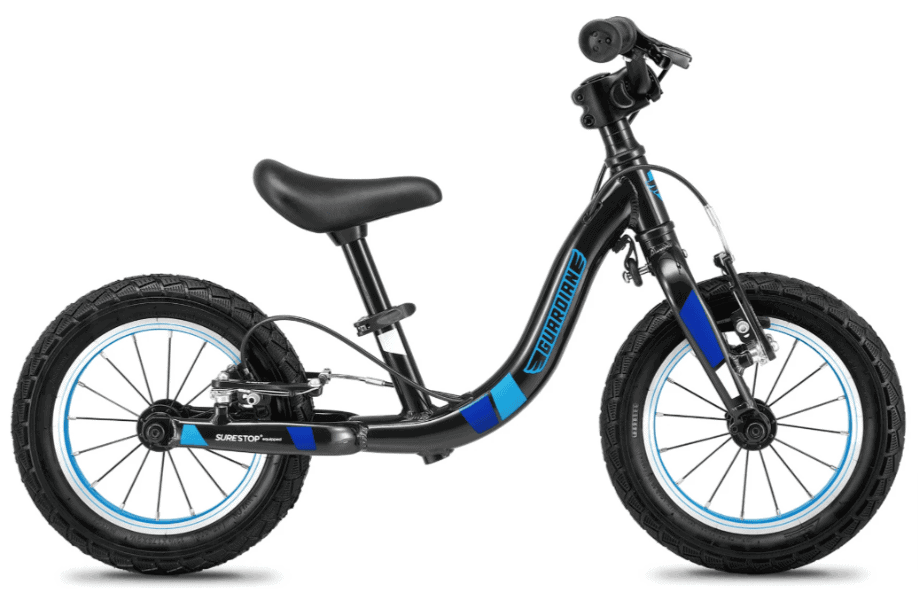
Guardian Highlights
- Best ages for 1.5 to 4
- Weight: 8.5 pounds
- Wheel Size: 12 inches
- Handbrake: yes
- Frame: Lightweight Aluminum
- Features: Steerling Limiter, Air tires, Front & Rear brake
7 Reasons for Choosing a Balance Bike Over Training Wheels
When considering balance bikes vs training wheels, there are several clear advantages to starting young kids off on a lighter balance bike before graduating to a pedal bike.
These advantages will shorten the time and endless frustration before they learn the joy of riding a bike.
Below are the 7 reasons why we choose a balance bike over training wheels:
1. Balance bike fit better for young kids from 18 months to 3 years old
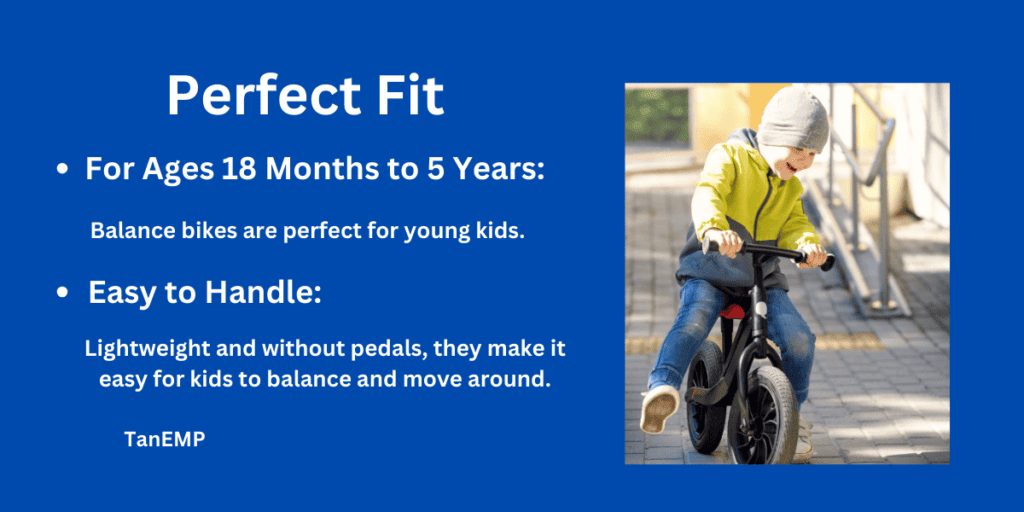
One of the key advantages of a balanced bike is its suitability for young children, typically ranging from around 18 months up to 5 years old.
Unlike traditional pedal bikes, balance bikes are remarkably lightweight (averaging between 6-9 lbs) and are free from pedals or chains.
This makes them exceptionally easy for younger kids to handle as they walk or scoot along. You can think of an advanced version of a walker balance bike.
The compact frame and low saddle heights enable children to confidently put their feet down, contributing to the development of coordination and balancing skills.
Concerned about your child’s age?
Fear not. As long as they can reach the lowest seat setting, children as young as 18 months can naturally progress from walking to wobbling, and soon enough, to running and gliding on the balance bike.
Drawing from personal experience with my daughter, she embarked on her balance bike journey at the age of 20 months, confidently walking within just four weeks.
For added safety, equipping your little rider with a helmet, knee pads, and wrist guards ensures a secure and enjoyable introduction to the world of bike riding.
2. Improve Balance and Coordination
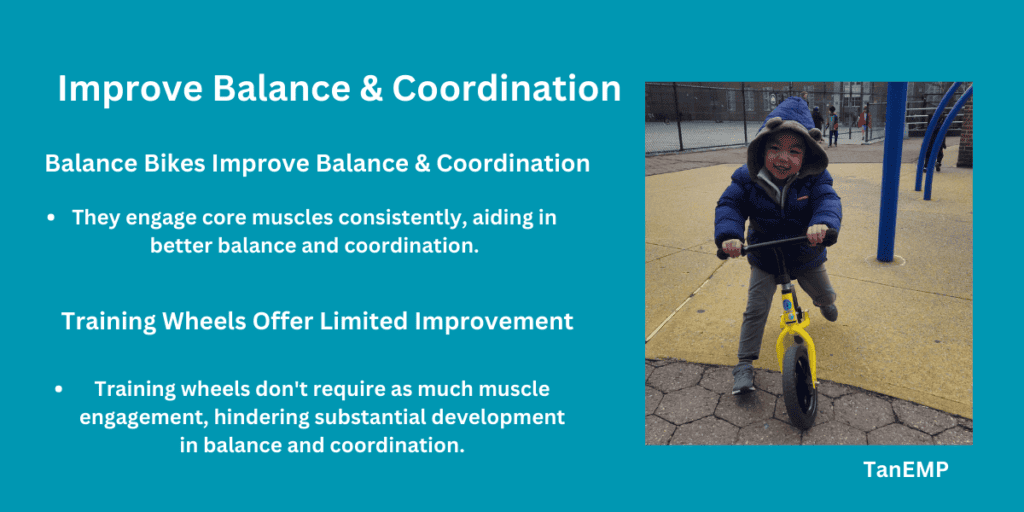
As mentioned earlier, balance bikes stand out as an exceptional tool for developing and enhancing your child’s balance and coordination.
In contrast, training wheels fall short in this aspect. They offer limited improvement to balance and coordination because the core muscles don’t have to work as rigorously to maintain balance during cycling.
Unlike balance bikes, which necessitate constant muscle engagement to keep the body upright while riding.
The unique advantage of young balance bike riders lies in their continuous effort to maintain balance and coordination, leading to more substantial development in these crucial skills.
3. Lightweight and easy for kids to handle
A significant advantage of balance bikes, particularly those like Strider bikes crafted with aluminum alloy frames and foam tires, lies in their lightweight construction.
Devoid of chains, gears, or pedals, balance bikes typically weigh between 6 to 10 pounds, making them exceptionally easy for young toddlers to effortlessly lift, steer, and manage.
I recall my 2-year-old daughter effortlessly picking up her balance bike and cruising without any assistance. The worry about the bike being too heavy simply disappeared.
While some balance bikes, such as Woom 1 or Guardian, come equipped with hand brakes for those keen on introducing braking skills early, it’s advisable to wait until children are a bit older.
Adding hand brakes to balance bikes for kids aged 18 months to 3 years may not be ideal, as it can increase the bike’s weight and potentially confuse the little riders.
The lightweight nature of these bikes ensures ease of handling and accelerates the learning curve for mastering balance, striding, and gliding.
4. Build Confidence
Riding a balance bike helps build confidence in your child because it allows them to control a bike moving on two wheels at their own pace.
Without pedals or training wheels, most toddlers don’t get frustrated trying to pedal and balance simultaneously.
As their feet scoot or stride along the ground, kids feel empowered to direct where their balance bike goes.
With repetition, steering and balancing at faster speeds becomes second nature. This sense of independence and capability builds children’s self-assurance in riding abilities even before a pedal bike.
5. Better transition to pedal bike without an extra learning curve
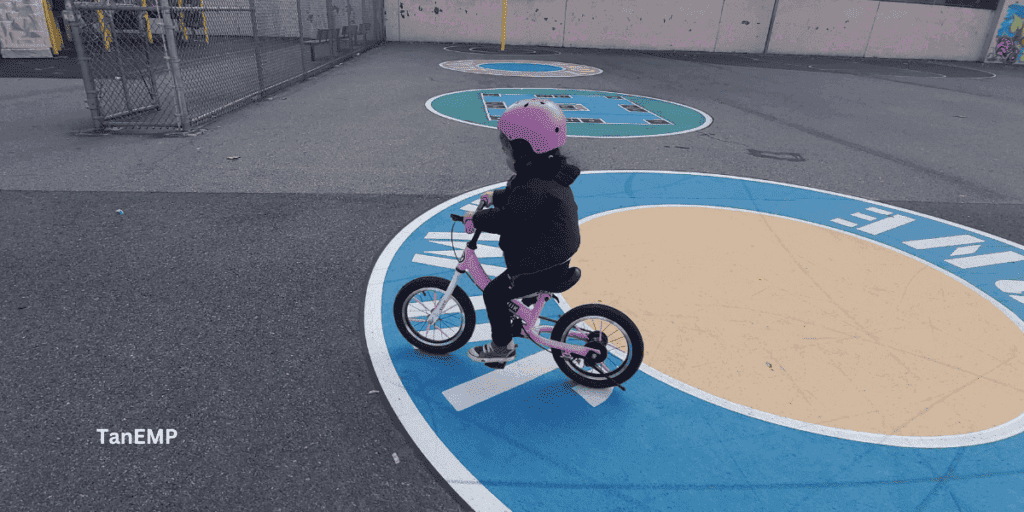
Mastering striding, gliding, balance, and steering on a balance bike lays a solid foundation for a seamless transition to a pedal bike.
Unlike the traditional training wheels approach, where the transition can be more challenging, the skills acquired on a balance bike significantly ease the process.
By prioritizing balance during the initial stages, children can later focus exclusively on learning to pedal without the added complexity of struggling to maintain balance simultaneously.
This investment in a balance bike not only pays off in terms of a smoother upgrade but also contributes to a more confident and capable young rider.
It’s a valuable step that proves worth every penny in the long run.
6. Encourage outdoor Exploration and Active Play
Bringing a balance bike along to the park, trails, or around the neighborhood is a convenient way to encourage outdoor activities and enhance your child’s riding skills.
Unlike pushing a stroller, a balance bike empowers your child to ride independently, fostering a sense of adventure and physical fitness.
Choosing a balance bike over a stroller allows you to relax while your child enjoys the freedom of riding.
However, there might be moments when you find yourself carrying both your child and the bike back home, give me a brief moment of doubt about leaving the stroller behind.
Despite occasional challenges, the overall benefits of encouraging outdoor exploration and active play with a balance bike outweigh the minor inconveniences.
7. Longer Usage
Finally, balance bikes tend to have a longer usable lifespan for kids.
Training wheels are typically removed by age 3-5, and they often get bored faster than balance bikes.
Your children can comfortably ride lightweight balance bikes from as young as 18 months up until 5 or 6 years old.
That’s up to 4 years of mastering balance, coordination, and control. With proper care, a durable balance bike makes the perfect practice vehicle as kids grow into a pedal bikes.
Is it Worth Buying a Balance Bike?
Considering the seven reasons mentioned above, balance bikes emerge as the clear winner.
They provide a smoother transition from a balance bike to a pedal bike, facilitate early learning of balance and coordination, and reduce the stress associated with bike riding.
Depending on when your child starts using a balance bike, buying one with an add-on pedal option can be advantageous.
In my son’s case, his second balance bike was a 14″, equipped with the option to add pedals after passing down his initial classic balance bike to his sister.
However, a new challenge arose when my daughter desired the same bike as her brother but in pink color.
We decided to keep the pedals off until she mastered the balance bike.
If you purchase through our partner links, we get paid for the referral at no additional cost to you!
Wrap Up
As we wrap up this exploration into the realm of balance bikes versus training wheels, I trust you now recognize the distinct advantages that balance bikes offer.
Beyond enhancing your child’s confidence on two wheels, they play a pivotal role in cultivating robust balance and coordination skills—attributes that training wheels struggle to impart.
If you remain steadfast in your belief that training wheels are the superior choice, be prepared to chase after your child as they navigates the journey of learning to ride a bike.
The choice is yours, and I hope this guide has equipped you with the insights needed to make the best decision for your little rider.
FAQ
Do you need training wheels after a balance bike?
Once your child has mastered the art of balance, striding, and gliding on a balance bike, the need for training wheels becomes inadequate.
The foundation laid during their balance bike journey equips them with the confidence and skills required to navigate two wheels independently.
The fear of imbalance or falling diminishes significantly, as they learn on day one with a balance bike how to find balance and stay on the bike longer.
I have two pairs of training wheels in my garage that are left untouched on day one. So give away your training wheels because your child won’t need them after they master the balance bike.
At what age should you get a balance bike?
Many parents wonder what is the optimal age for purchasing a balance bike.
While lightweight strider bikes are made to fit riders as young as 18 months, most toddlers between 2 to 3 years old can start scooting around on a balance bike.
This younger age allows them to naturally develop coordination and balance skills over more months and years before moving onto a pedal bike by ages 5-6.
Can a 3-year-old ride a bike with training wheels?
By age 3, most toddlers have the leg strength and coordination to pedal a small bike outfitted with training wheels.
However, while the training wheels provide some stability, a 3-year-old must still balance adequately to steer properly.
Riding a bike with training wheels can be frustrating if balance abilities are not solidified.
